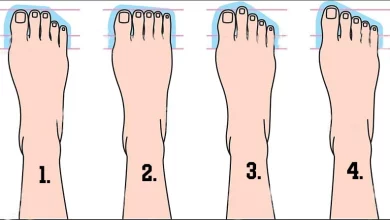The exact cause of brain cancer is unknown. However, factors that can increase your risk of brain cancer include exposure to high doses of ionizing radiation and a family history of brain cancer.
Cancer in another part of your body is also a risk factor for developing a tumor in the brain, though these aren’t called brain cancer. They are cancers that have spread to the brain.
Cancers that commonly spread, or metastasize, to the brain include:
- lung cancer
- breast cancer
- kidney cancer
- bladder cancer
- melanoma, which is a type of skin cancer
Other factors that might be related to developing brain cancer include:
- increased age
- long-term smoking
- exposure to pesticides, herbicides, and fertilizer
- working with elements that can cause cancer, such as lead, plastic, rubber, petroleum, and some textiles
- having an Epstein-Barr virus infection, or mononucleosis
Types of brain cancer
Cancer is named based on where in your body it begins. Brain cancer begins in your brain. This is sometimes referred to as primary brain cancer.
You can also have cancer that has spread to your brain after starting somewhere else in your body. This is called metastatic brain cancer. Cancerous tumors in the brain are typically metastatic and not due to primary brain cancer.
There are also types and grades of brain tumors. The tumor type is based on where it’s located in your brain, and the grade indicates how quickly a tumor grows. The grades range from 1 to 4, with grade 4 having the fastest growth.
There are more than 120 types of brain tumors. However, there’s no standard for naming them according to type, and there are many subtypes. Different doctors might use different names for the same tumor.
How is brain cancer diagnosed?
If you have symptoms of a brain tumor, your doctor may perform one of the following to make a diagnosis:
- a neurological examination to determine if a tumor is affecting your brain
- imaging tests, such as CT, MRI, and positron emission tomography (PET) scans, to locate the tumor
- a lumbar puncture, which is a procedure that collects a small sample of the fluid that surrounds your brain and spinal cord, to check for cancer cells
- a brain biopsy, which is a surgical procedure in which a small amount of the tumor is removed for diagnostic testing and to determine if your tumor is malignant
How is brain cancer treated?
There are several treatments for brain cancer. Treatment for primary brain cancer will be different from treatment for cancers that have metastasized from other sites.
You may receive one or more treatments depending on the type, size, and location of your brain tumor. Your age and general health are also factors.
Treatments include:
Surgery
Surgery is the most common treatment for brain cancer. Sometimes, only part of your tumor can be removed due to its location.
In some instances, a tumor is located in a sensitive or inaccessible area of your brain, and surgery to remove it can’t be performed. These kinds of tumors are referred to as inoperable.
Chemotherapy and radiation therapy
You may be given chemotherapy drugs to destroy cancer cells in your brain and to shrink your tumor. Chemotherapy drugs may be given orally or intravenously.
Radiation therapy may be recommended to destroy tumor tissue or cancer cells that can’t be surgically removed. This is done with high-energy waves, such as X-rays.
Sometimes, you may need to undergo chemotherapy and radiation therapy at the same time. Chemotherapy may also be done after radiation treatment.
Biologic drugs
Your doctor may prescribe biologic drugs to boost, direct, or restore your body’s natural defenses against your tumor. For example, the drug bevacizumab works to stop the growth of blood vessels that supply tumors.
Other medications
Your doctor may prescribe medications to treat symptoms and side effects caused by your brain tumor and brain cancer treatments.
Clinical trials
In advanced cases of brain cancer that don’t respond to treatment, clinical trial therapies and medications may be used. These are treatments that are still in the testing phase.
Rehabilitation
You may need to go through rehabilitation if your cancer has caused damage in your brain that affects your ability to talk, walk, or perform other normal functions.
Rehabilitation includes physical therapy, occupational therapy, and other therapies that can help you relearn activities.
Alternative therapies
There isn’t a lot of scientific research that supports the use of alternative therapies to treat brain cancer. However, your doctor may recommend that you combine alternative therapies or lifestyle changes with conventional treatments.
For example, they may recommend a healthy diet and vitamin and mineral supplementation to replace nutrients lost from your cancer treatment. They may also recommend acupuncture and certain herbs.
You should talk to your doctor before taking herbs because some can interfere with medications.
Long-term outlook
Your long-term outlook depends on the type, size, and location of your brain tumor. Some types of brain cancer generally have a low survival rate.
However, the American Cancer Society reports that for some types of brain cancer, up to 90 percent Trusted Source of patients between the ages of 20 and 44 survive for 5 years or longer.
Some brain cancer treatments can increase your risk of getting other cancerous tumors or may cause cataracts, which is clouding of the eyes.
Reducing your risk of brain cancer
There’s no way to prevent brain cancer, but you can reduce your risk of getting it if you:
- avoid exposure to pesticides and insecticides
- avoid exposure to carcinogenic chemicals
- avoid smoking
- avoid unnecessary exposure to radiation



